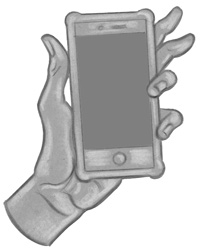 News
News21 January, 2021
I am so happy with Mariela Borello’s Online Retrospective Catalogue. AOPA is particularly proud of the outcome.
There is so much content here, 127 works, 9 series, and lots of information on each. But by proper organization, well-considered UX and visual design, and great programming, the site does not overwhelm. Users are always oriented. It looks simple despite the complexity. That’s success.
The process of organizing the content for Mariela’s site was super interesting, trying to come up with a solid structure for the presentation of her complex and multifaceted body of work, spanning over two decades. Proper information design is one of the specialties we bring to making websites for artists. It reminds me the relationship I had with artists when I did curatorial projects, minus the fun of hanging the show, of course, but without the physical limitations of the gallery space.
It took some fancy programming to make it all work. My precious collaborators at CreativeDot provided this magic (they can make content do anything!). All artist sites made at AOPA use a database and what are called dynamic templates. It is different than something like SquareSpace, where each page must be made by hand, which is okay if you are making a promotional site with a few works, but not so great for a website with over a hundred works, and one that is to be updated regularly.
The programmers make the templates using “queries” that call on the database to provide all the content required to make a page. Mariela sometimes but not always works in series. So to present this mix required some complex queries. Especially challenging was building the query for what is to be seen in the slideshow.
In the end, clicking on the “Slideshow” link in any of the round tiles, whether it represents a series or an individual work, takes us with ease on a clickable tour through all the works in that section, giving us an overview, like walking through a gallery. And if users want to go deeper they can either go to the series pages or the single work pages, where all the info on that work is to be found, right down to the exhibition history and the artist’s statement. Not bad!
I have to mention that we benefited from the well seasoned print-catalogue designer Rodolfo Borello, who had a big hand in creating the visual vocabulary. AOPA just had to bring these ideas over to the digital environment.
I could go on an on but if you are interested we invite you to watch the video above to hear Don and Mariela discussing the process of making of her online retrospective catalogue, and commenting on its various features.
choose your preferred method of communication